In the headphone space, the release of a “MKII” iteration generally means a series of minor updates that improve an existing product without a significant departure from the original model; that is especially true if the first product sold rather well. That was my initial thought process when the Beyerdynamic DT 1990 Pro MKII and DT 1770 Pro MKII arrived recently.
When one considers that both headphones have been some of the most popular in the pro audio world for many years, it would not make a lot of sense for Beyerdynamic to upset the apple cart and crater their sales.
On the other hand, the German manufacturer have proven to be somewhat bold in that regard; the DT 700 Pro X and DT 990 Pro X slotted in just above their entry-level series of headphones that have existed for nearly 30 years in the market.

Design Changes?
The kit has changed very little with the headphones; Beyerdynamic includes two sets of pads (velour and vegan leather), straight 3 meter cable, and a 5 meter coiled cable (both 3-pin XLR to 3.5mm) and a 3.5 to 6.35mm adapter all tucked in a hard shell transport case. Almost everything that one should expect with these types of headphones designed for studio work and listening at home.
If you are new to these headphones, the design does share some similarities with the previous iteration; the ear cup size and shape are the same and the gimbals and headband are holdovers. The biggest external difference is the design of the grilles which have more surface area covered by the vents.
The original models had a “3-2-3-2-3-2-1” pattern of vents from the mid-line to the top and bottom edges with fairly large areas of material between the vents.
The new model uses a similar pattern but reduces the space between vents with 5 rows of alternating “3-2” vents followed by two rows of a “2-1” pattern and then an additional single vent at the very top and bottom.
The result delivers a similar aesthetic as the original while allowing considerably more airflow through the cups. The external shell has a new glossy finish compared to my first generation model, but I’m starting to wonder if my consistent use actually wore down the original finish. The DT 1990 Pro MKII is a mix of the original DT 1990 and DT 900 Pro X and looks ready for a lifetime of use.

Comfort & Fit
Studio professionals have very different criteria when it comes to comfort levels and how headphones need to fit compared to the average consumer and it’s clear that Beyerdynamic have not modified the new design in a way that will hurt sales.
The velour pads and moderate degree of clamping force provide enough grip to keep the Beyerdynamic DT 1990 Pro MKII firmly in place whilst remaining very comfortable for long listening sessions.
The new headphones are 376 grams and only 5 grams heavier than their predecessor; it’s not something that you will really notice. With the exception of the changes to the grilles, you would be hard pressed to tell them apart and that’s the likely source of some of the additional weight. The internal changes are far more significant.

Driver Technology
Beyerdynamic has been working to improve their TESLA series drivers and the 1990 Pro MkII utilizes a new TESLA.45 driver; the drivers are still a 45mm dynamic driver with high flux magnets, but about everything else is new.
The original DT 1990 Pro used 250Ω drivers with a sensitivity of 102 dB at 1mW (500Hz) while the new MkII versions uses 30Ω drivers with a sensitivity of 94 dB also measured at 500Hz.
Beyerdynamic has been busy working on creating a faster driver with lower distortion, better control, improved dynamics, and more detail.
The lower impedance of the new model allows the MkII to be used with a broader range of sources but will mean that those moving from the original will need to recalibrate as the new model takes slightly less power when volume matching the original.

Listening
We paired the DT 1990 Pro MkII with a variety of gear including an Astell&Kern SP2000T DAP, Burson Conductor GT4 desktop system, and my reference RME ADI-2 Pro FS R Black.
The RME is likely the closest to the DT 1990 MkII’s natural habitat in the studio so I did the bulk of my listening with that combination. Likewise, the DT 1990 series has always shipped with the velour pads installed so again, most of my listening sessions were with those ear pads.
It should be noted that the goal of studio headphones is to make every adjustment on the board evident at the ear. This means that the perfect headphone in this space is one that is perfectly neutral but also capable of delivering every frequency with the highest level of clarity and detail when called upon.
The sub-bass range has strong impact and depth when required but does not bleed over into the mid bass and disappears into the background when it is not the focus. That level of control works in its favour because as one moves into the mid bass, there is a noticeable uptick in texture whilst preserving the overall neutrality of the bass range.
The overall bass range has very good impact and speed and dynamic shifts never turn the lower registers into a thick mess that obstructs detail. The bass range also reacts well to EQ which gives the Beyerdynamic DT 1990 Pro MKII the ability to deliver very resolute sub-bass impact if desired and also thin out the mid-bass somewhat if the kick drum sounds somewhat boxy.
Beyerdynamic should be commended for keeping the overall presentation extremely neutral whilst allowing the bass range to provide a very firm foundation that has additional impact when needed. Some studio headphones are neutral to the point of being boring, but that’s not the case with these.

Midrange
The lower midrange is not obscured by any sense of bleed from the upper bass range and delivers mixes with good clarity; guitar notes have strong growl and a rather sharp rasp. Male vocals are delivered with good tonal weight and clarity and cut through the mix well without sounding artificially boosted ahead of the instrumentation.
Strings are reproduced with a great deal of presence and detail without sounding harsh and piano notes are especially good in that regard; the Beyerdynamic do a rather good job with tonal weight and decay as well and the piano comes across rather realistically.
Female vocals cut through the mix rather well without becoming strident and walk the line between balanced and somewhat safe sounding; listeners can certainly adjust this with some EQ but it’s not really necessary.
The midrange is well balanced without any portion being particularly recessed or jumping out to the frontand it’s one of those headphones that reacts better than most to EQ. The changes can be heard right away and listeners will able to adjust its tonal balance and presentation to match their own listening tastes.
Can You See the Light?
One of the most polarizing aspects of Beyerdynamic’s studio headphones has been its treble presentation. It is pushed slightly forward in the lower treble which helps female vocals cut through and gives percussion a nice sharp snap, but at the same time this can become harsh and sibilant if pushed too far.
From our perspective, this provides a bit of a safeguard when mixing because I prefer a livelier top end – but not everyone does and by having a lift in the treble range, the sound that reaches your ear is slightly brighter sounding than what is actually on the track – which leads to the track being mastered at a level that is slightly below the tuning of the headphone.
There is a bit of a spike in the 9kHz range that is also typical of Beyerdynamic’s tuning. The DT 1990 Pro MKII’s performance, however, is actually recessed in the treble compared to other models in the lineup and even compared to the previous DT 1990 model.
My ear is susceptible in that part of the range and at times it can cause cymbals to sound slightly tizzy or metallic – and that was also the case with the DT 1990 Pro MKII.
Fortunately, the headphone responds well to EQ and I was able to tweak the sound to reduce a good portion of that lift.
The treble performance certainly plays a part in the creation of a rather wide and spacious soundstage with enough depth and height to sound rather realistic; the DT 1990 Pro MKII is rather good at placing musicians and instruments in their proper spot and the imaging is precise enough to make it possible to place a vocal over the instrument or to understand that the performer has moved forward or back within the soundstage.
Seating the orchestra is rather straight forward with no significant gaps or sense of overlap.
Throwing more complex tracks at the DT 1990 Pro MKII to determine if it could handle intense dynamic shifts, upticks in volume and a lot more information demonstrated an excellent ability to avoid compression. This is a headphone that can handle almost everything and remain focused and clear.

The Bottom Line
Beyerdynamic likes to fly under the radar with some of its products, and refuses to participate in the “flavor of the month” games that other headphone brands have become entrapped in.
Rather than try to entice listeners with features they generally don’t need, the brand has focused on building robust, reliable, and affordable headphones that professionals actually need.
They have a loyal following for a reason.
The DT 1990 Pro MKII are an improved update of a best-selling studio headphone, and those changes are rather consequential; they are easier to drive, more engaging and livelier, and respond well to EQ in a manner that previous iterations did not.
The $599 asking price is well within the reach of most professionals and consumers and with the typical Beyerdynamic build quality that will guarantee that they last many years.
Studio professionals can invest in a pair knowing that they will deliver consistent results on a daily basis and survive the abuse of studio life. Consumers might be shocked to discover that high-end headphones that don’t need to be replaced every few years exist below $600.
If you have the budget for a pair of Audeze MM-500 Studio Headphones, you might find them to be a superior listen – but at almost 3 times the price – they certainly don’t represent a better value for the money. Beyerdynamic has created a pair of excellent studio headphones that I will be reaching for in the years to come at a great price.
Pros:
- Solid build quality
- Near neutral while remaining engaging
- Lower impedance allows a wider variety of sources
- Takes EQ very well
Cons:
- Lift in the treble range around 9kHz
- More expensive than some competitors mid-level models
Where to buy:
Related Reading:


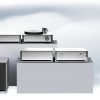
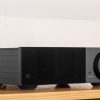
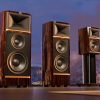
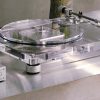

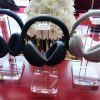

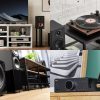

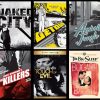










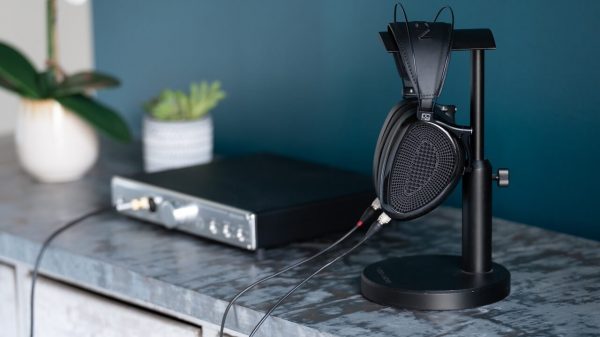














Asa
February 14, 2025 at 11:37 pm
I have the DT 770 model, and while it’s all day comfortable and built well, I find BD headphone overly neutral. Even with a DAC, there’ not a lot of ‘dynamic’ to them. I still enjoy them, but I’m enjoying these more for casual listening. https://www.masterdynamic.com/products/me05?variant=45780111982784
Thanks for the review, and that’s a great price for what they offer.